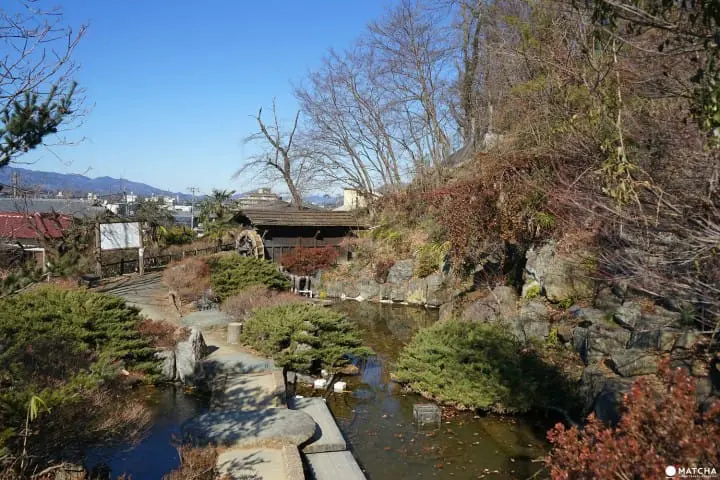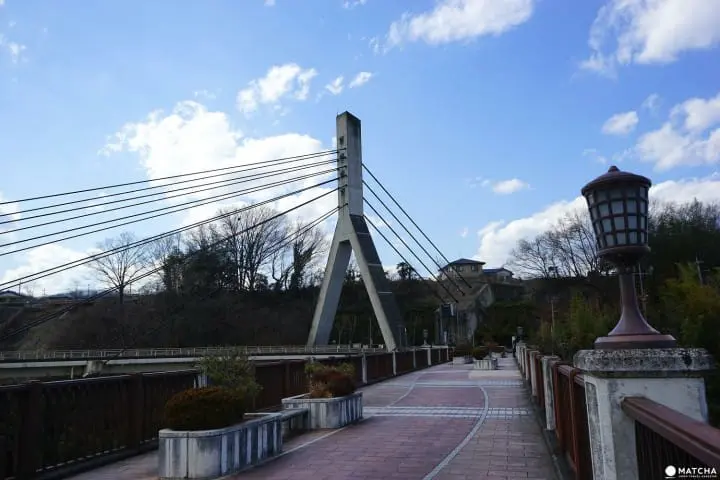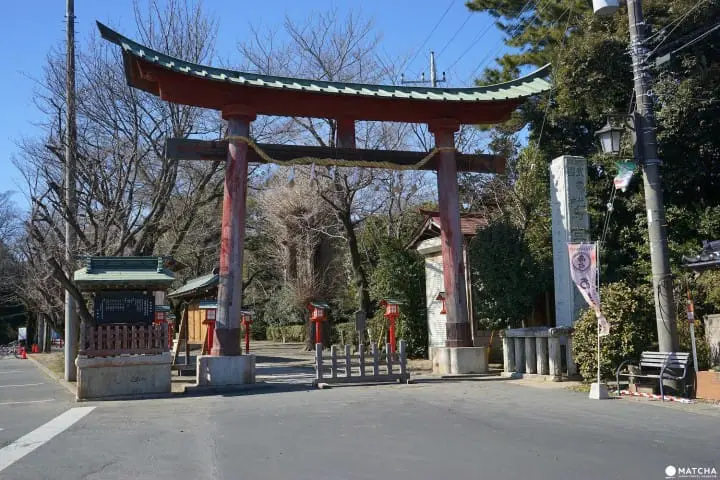Ever Seen This Place? 8 Saitama Spots Featured In Popular Anime

Anime and manga fans must make the short journey to Saitama prefecture, where some of the most popular recent anime are set! We introduce here eight of the sites that fans should definitely visit in Saitama's Chichibu, Kawagoe, and Kuki.
Saitama prefecture is well-known for its refined, traditional city streets and beautiful natural spots. It's also a perfect place to go on a day trip from Tokyo.
Chichibu city has famous sites such as Shibazakura Hill and the Ashigakubo icicles (Japanese). Other places that are filled with sites that everyone should see at least once are Kawagoe city with its Edo period atmosphere and Saitama city which has the Omiya bonsai village.

Chichibu's Shibazakura Hill
Saitama prefecture has recently become known as the setting for many popular anime series too. Various locations in Chichibuappear in Anohana: The Flower We Saw That Day(also known as simply Anohana) and The Anthem of the Heart. Kawagoe is the stage to the anime series Kamisama Kiss (Japanese), while Washinomiya Shrine in Kuki was used as the model of the shrine featured in Lucky Star (Japanese). Lucky Star in particular has many fans overseas, but in general there has been an increase in the number of people coming to visit these and other settings for popular anime, manga and even drama series in Japan.
Going back and forth between the world of fiction and the real places, we'll introduce to you some of the amazing places in Saitama that became popular as the setting for anime works.
Chichibu: The City of Touching Dramas ("Anohana", "The Anthem of the Heart")
Chichibu city is an 80-minute train ride on the Seibu Railways Rapid train from Ikebukuro Station in Tokyo. For those who want to comfortably go around the city's sightseeing spots and anime settings, we recommend going to the Chichibu Tourist Association and using their rent-a-cycle service (Japanese). It's located in front of the station. You can rent the bicycles there from 2 hours for 300 yen to one day for 1000 yen. It's a convenient way to see the sights of the city.
1. Hitsujiyama Park
If you head east after exiting Seibu Chichibu Station, you'll arrive at Hitsujiyama Park, a park on top of a small hill that's at the edge of Chichibu city. Located within this park is Shibazakura Hill, which gains attention throughout the nation every year between the end of April to the beginning of May.
If you head towards this hill from the Seibu Chichibu Station direction, you'll first see Bokusui Waterfall at the bottom of Mt. Hitsuji. The Taisho period author and poet Wakayama Bokusui loved travelling and created several works about this area because he liked it so much.


The stairs next to Bokusui falls are a sight that any fan of "The Anthem of the Heart" would recognize. It was here, on these stairs, that the main character Jun realized her words hurt others losing her ability to speak. The stairs drawn in the anime look just like the actual stairs!

You can see the city from above if you climb up the stairs to the top of the hill. Nearby is Mt. Buko Museum (Japanese) and Yamato Art Museum (Japanese). They're the ideal spots to learn more about Chichibu city.
2. Daiji-ji Temple
If you go down the east side of Mt. Hitsuji, you'll arrive at the town of Yokoze. Follow the road north and Chichibu Fudasho No. 10 (*1) Daiji-ji Temple will appear on your left.
*1 Fudasho - a temple located on a pilgrimage route, where pilgrims receive a paper aknowledging their visit ("fuda").

The history of Daiji-ji Temple goes back to 1490.

The main hall of Daiji-ji Temple
The main hall is known for having many valuable statues enshrined within it.

The Jizo statues in the temple grounds

The halls and main shrine of Daiji-ji Temple are simple and built according to Zen principles.

Many fans of the movie "The Anthem of My Heart" will surely remember seeing the precincts of Daiji-ji in the film. The depictions of the main hall were drawn down to the smallest detail according to the original.
Within these very temple grounds, the main character received from her friend a very important hint, namely that "if something is hard to express in words, you can try to sing it out". This is a decisive scene for the development of the story.
Within Daiji-ji's grounds, you'll see movie posters and votive pictures that feature characters from the movie as well. It's a spot where you can sit on a bench just like those drawn in the movie and enjoy a moment recollecting the story.

From Daiji-ji you can see Mount Buko, located in between Chichibu city and Yokoze town. It's a limestone mountain witha very distinctive appearance.

Mount Buko, with its fascinatingly strong presence, is an important element when it comes to creating the scenery around Chichibu. It is so central to the area that it appears in the background in many scenes of the movies set in Chichibu.
3. Banba Shopping District

After returning to Chichibu, let's stop by Banba Shopping District. It's between Ohanabatake station and Chichibu station. In "The Anthem of My Heart" you can see the Banba Shopping District at night, but if you come during the daytime, you can explore the surroundings while walking around and eating taiyaki or steamed buns sold in the stores that line both sides of the street. There are stores that sell souvenirs from Chichibu here, as well as regional crafts.
If you head towards Chichibu Station, you'll arrive at Chichibu Shrine located in the center of town. The base of the famous Chichibu festival is none other than Chichibu shrine. Please stop by to see the appealing and elegant main hall of this shrine.
Fans of "Anohana" and "The Anthem of My Heart" can discover posters of their favorite characters throughout Banba Shopping District. We definitely recommend taking a walk around this area.
4. Jorin-ji Temple

Jorin-ji Temple is located in a quiet residential area in the north side of Chichibu. The eleven-faced Kannon statue of this temple is said to have been created in 1595. It has been preserved with care in this temple ever since.

100 carved Japanese Kannon statues can be found on the large copper bell located within the precincts of this temple. It is a precisely made bell and is designated as one of Saitama prefecture's Tangible Cultural Properties.

The scene where kids in "Anohana" are playing hide and seek within Jyorin-ji's precincts is one of the important motifs in the movie. The vivid details of the temple drawn in the movie are inspired by the design of the original building.
5. Old Chichibu Bridge

If you walk 12 minutes west from Onohara Station, located in the northern side of the city, you will arrive at the Old Chichibu Bridge. This bridge that crosses the Arakawa river was completed in 1932. After the New Chichibu Bridge was completed, this one became a promenade bridge.

The New Chichibu Bridge is a cable stayed bridge for transportation purposes. Its expansive build will leave quite the impression on you. It appears many times alongside Old Chichibu Bridge in "Anohana" in the scenes where the characters meet to go to their "secret base". You can go to the underpass and look at both bridges from below too.

From the top of Old Chichiibu Bridge, we recommend observing Arakawa River flowing by and the scenery of the town past the river.

After you spend the day touring around the sights of Chichibu, you're bound to see another appealing part of this town at night. If you look up at the night skies, you'll see stars spreading out all around you.
Many people will remember the last scene of the movie "Anohana" the moment they look up at the night sky. This very sky may have been one of the reasons why Chichibu was chosen as a stage for this story.
Kawagoe: Elegant and Retro Atmosphere ("Kamisama Kiss")

Kawagoe with its old town feel is also called Koedo (*2). It has gained attention from domestic and international travelers alike, thanks to its fine shrines and temple, historical buildings from the Edo period, and shopping district lined with retro stores.
*2 Koedo: 'ko' means 'small' in Japanese, while Edo is the former name of Tokyo, making this area 'little Edo' or a city reminiscent of old Tokyo.

You'll see a lot of neat things while looking around at souvenir shops! The "Kamisama Kiss" fans will surely get excited when they'll see fox maskes in Kawagoe, the stage for "Kamisama Kiss".
Let's go out and explore the Kawagoe spots that appear in this popular anime series!
6. Toki no Kane ("The Bell of Time")

If you walk down Kanetsuki street with its appealing stores, your eyes will be drawn to the unique Toki no Kane, or Bell of Time. The bell tower has encountered fires many times since Kawagoe was a prosperous castle town in the Edo period, and has been rebuilt every time. Located in a 16-meter tall tower, the bell rings four times a day (6:00, 12:00, 15:00, and 18:00). The sound of the Toki no Kane is loved by the people of the city and it has been designated as one of the "Best 100 Soundscapes of Japan".
The Toki no Kane can be said to be Kawagoe's symbol. Its elegant and fine shape often appears in "Kamisama Kiss". You'll be able to spend an exciting time in the city because you'll feel like you're taking part in the story.
7. Kawagoe Castle Fujimi Tower Ruins

If you walk to the east of Kanetsuki street for several minutes, you'll arrive at the ruins of Kawagoe Castle's Fujimi Tower. When you climb up the stairs, you'll arrive at a place on top of the hill where the tower used to be during the Edo period. It's said that one was able to see Mt. Fuji from the top of this tower.
Incidentally, Mikage Shrine, which is the main setting of "Kamisama Kiss" is set as being located on top of a hill at the edge of the town, but the Fujimi Tower Ruins is the only hill where you can look down at the entire town!

Behind the Kawagoe Castle Fujimi Tower Ruins there is actually a small shrine, called Mitake Shrine. This shrine that quietly stands here might have been the model for the anime's Mikage Shrine.

After exploring further from Mitake Shrine, you'll discover a small Inari shrine, called Fushimi Inari Shrine. The Mitake Shrine and Fushimi Inari Shrine located here in the same area might remind you of the two main characters in "Kamisama Kiss" - Nanami, who suddenly becomes the guardian deity of a local shrine, and Tomoe, the powerful divine messenger. Your heart will dance with excitement when you think that the relationship between the two characters might have been inspired by these shrines!

Main entrance of Daishi Kawagoe (Kita-in Temple)
In addition to these spots, tyou can also check out the Daishi Kawagoe Kita-in Temple, which is known as an Important Cultural Heritage building. There is also Hikawa shrine, which is a famous matchmaking shrine here as well. Kawagoe has many amzing sights and you can spend a splendid day walking around town all the while enjoying potato-based sweets, a local specialty.

The area around Kawagoe Station is different from the sightseeing spots with their Japanese traditional styles. Near the station you will find the modern side of Kawagoe instead. As Kawagoe has both a modern side to it and a mysterious atmosphere around its various shrines and temples, it was just perfect as the setting for "Kamisama Kiss", which was inspired by the relationship between the world of humans and the world of gods.
Kuki: A History Dating Back Centuries ("Lucky Star")
8. Washinomiya Shrine
Washinomiya Shrine, in Saitama prefecture’s Kuki city, is one of the oldest shrines in the Kanto region and is a highly revered shrine. Inside the precincts, traces of houses from ancient times were discovered and that gave weight to the thought that this place has a history dating back to prehistoric times (BCE).


After passing through the large torii gate and entering the grounds of Washinomiya Shrine, you'll feel a stillness reminiscent of those ancient times.

On the stage located in front of the main hall, performances of the Shinto ritual dance called "kagura" (*3) are held. The Washinomiya Saibara Kagura is a type of ritual dance that still retains its old style and can be seen six times a year. It's a sight that can only be enjoyed at Washinomiya Shrine.
(*3) Kagura: a sacred Shinto dance ritual accompanied by music that is dedicated to the deities.

Within the grounds of Washinomiya Shrine you will also find a pond called "The Pond of Light". According to a legend, a dragon god lives inside this pond. It's a mysterious place where the light reflecting on the water surface makes you feel as though you were peering into the world of myth.

Washinomiya Shrine became the model for the Washinomiya Shrine found in the popular anime "Lucky Star", where the father of the Hiiragi sisters works as the chief priest. You can find "Lucky Star" related items within the shrine grounds here; the illustrated votive boards of the "Lucky Star" characters are particularly popular.
In Conclusion
Did you enjoy this tour of Saitama's cities? Instead of the classic sightseeing spots in Japan, there are several places that are important settings for stories, as well as for recent manga and anime series. How about stopping by Chichibu, Kawagoe, and Kuki during your vacation and taking a look at some spots that are loved by many people? The fact that old folktales and the new stories created by contemporary creators overlap is one of the most appealing points of the cities in Saitama prefecture.
For other great sightseeing destinations in Saitama, please refer to our special feature on Saitama Prefecture.
Read also
Sponsored by Saitama Prefecture
MATCHA's promotional account for corporate and local government advertising. We aim to provide useful information to our readers in an enjoyable manner.








































![[Coupon Available] Attention Overseas Winter Sports Fans! Nagano's Sports Depot Has Evolved](https://resources.matcha-jp.com/resize/720x2000/2026/01/05-254819.webp)
![[2 hours from Tokyo ] 10 Quiet and Breathtaking Views of Mount Fuji in Yamanashi Hokuto City , Yamanashi - Part 2](https://resources.matcha-jp.com/resize/720x2000/2025/12/16-253037.webp)
